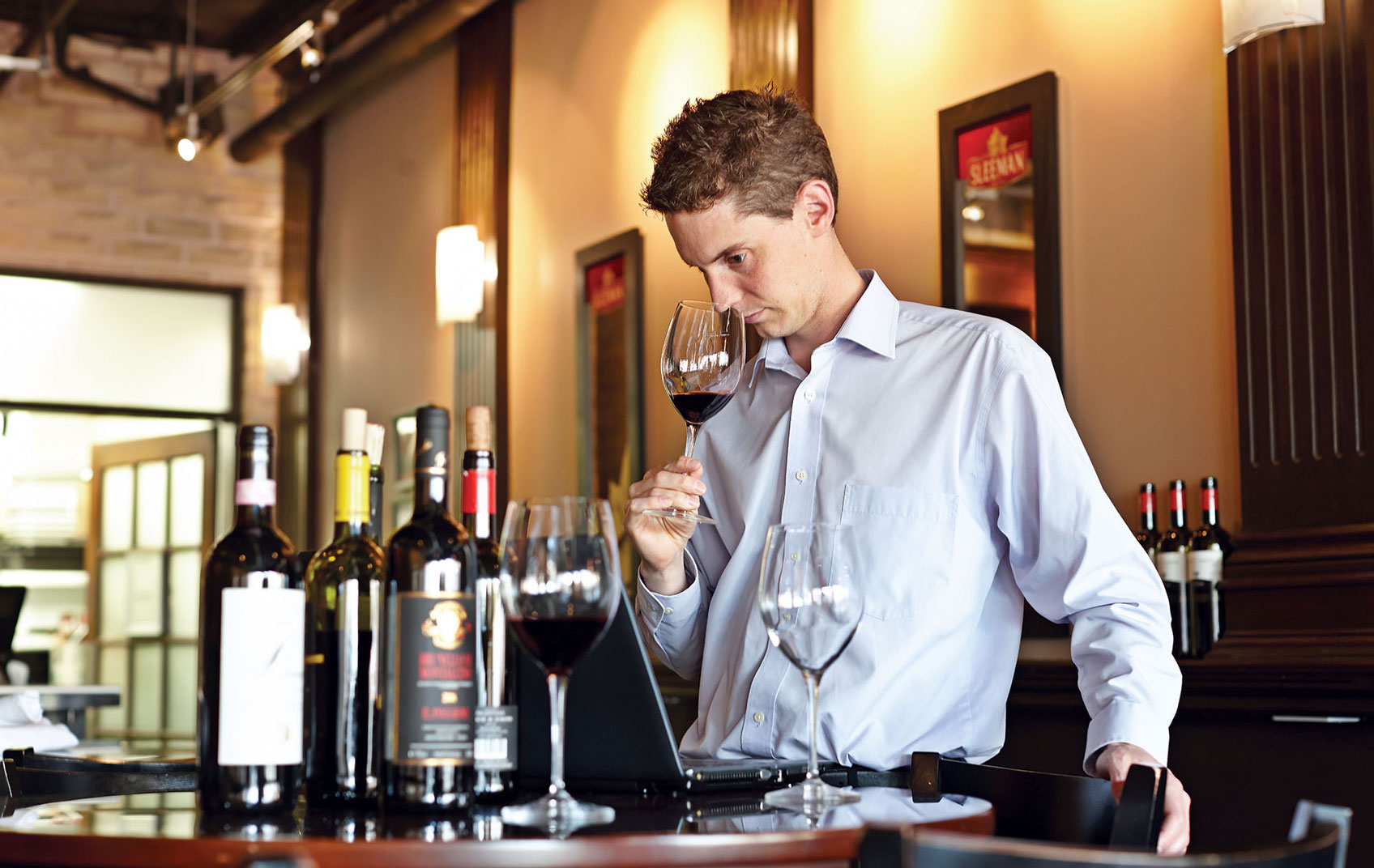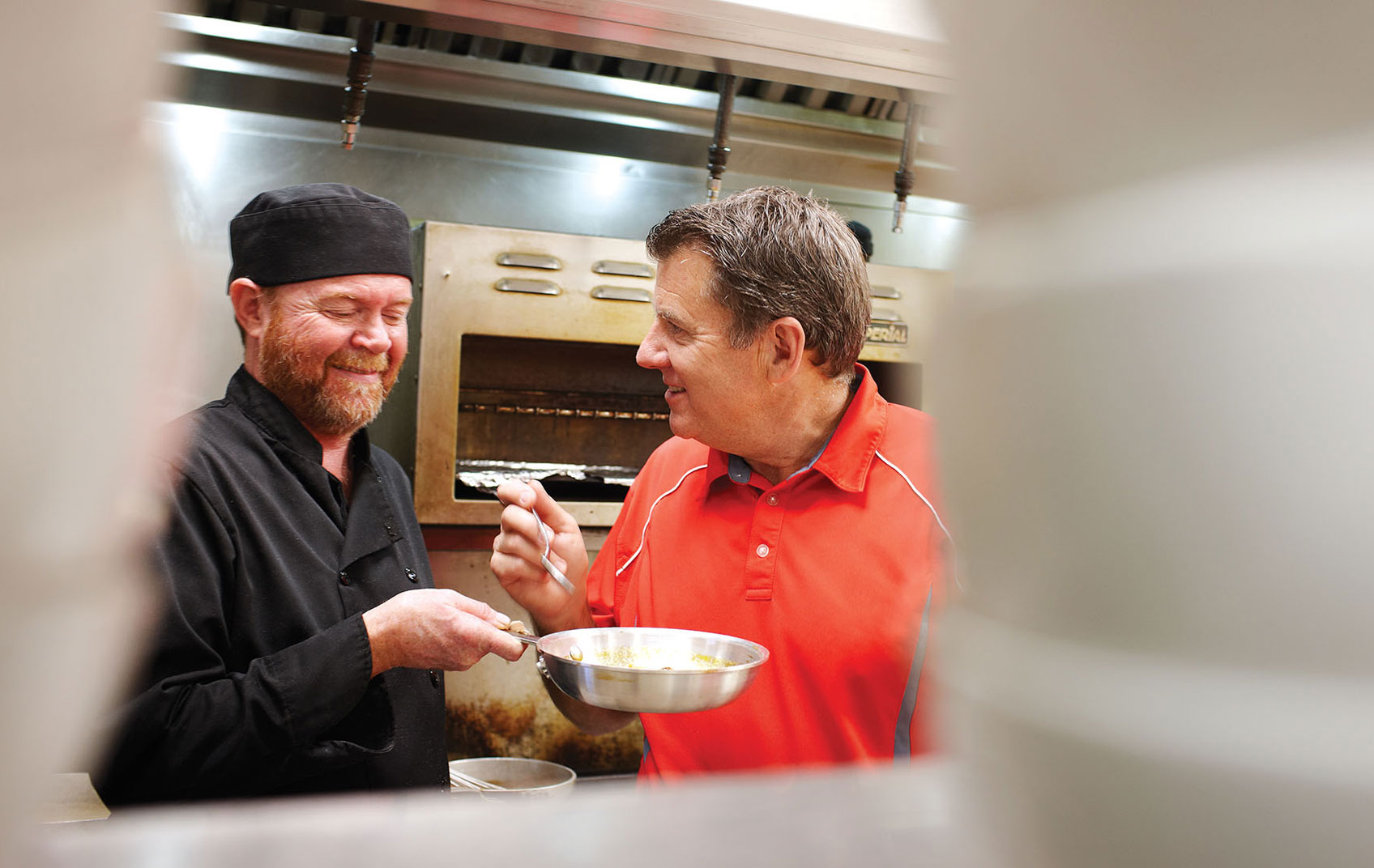Ivey alumni succeed where so many fail in the restaurant business
Let’s face it, at some point many of us have dreamed of opening a restaurant. Usually it’s at the end of a great meal accompanied by copious amounts of excellent wine. We lean back in our chairs, reflect on our good taste and talent, and decide that running a restaurant can’t be that tough. “I think a lot of people who open restaurants have never really worked in a restaurant before,” says James McGillivray, EMBA ’00. “It’s people who think, ‘Hey, this should be fun.’”
Luckily, most people don’t follow through, perhaps daunted by the famous statistic that 90 per cent of new restaurants fail in the first year. (In fact, research shows that the figure is closer to 26 per cent in the first year, and 60 per cent by year three.) But some intrepid souls go for it. And a few, armed with an Ivey education, industry experience, perseverance and hard work, make a success of it.
McGillivray grew up in the hospitality industry, working in restaurants as a teenager, studying hotel management at Cornell, and then working at the Blue Mountain Ski Resort and with Westin Hotels. Along the way he completed an Ivey Executive MBA. Two years ago, McGillivray and his wife decided it was time to do something on their own. The concept was one he had seen while on an Ivey study trip to Southeast Asia: food served on sizzling hot volcanic rocks, so that customers can cook their own meal as they eat it. Volcano Hot Stone Grill was born in Gainesville, Virginia, a Washington, D.C. bedroom community. The Grill has an urban vibe and a volcano theme, with a huge photo of a lava flow on the back wall, and a red-lit fountain behind the bar.
Despite his long experience in the industry and a business plan that was well received, McGillivray says getting financing for a restaurant startup was his top challenge. “I’ve heard that it’s easier when you’ve been open for two years or more, but for that first location, you’d better know people with money!” Getting approval for the restaurant renovation from local government also took longer than expected.
The restaurant is full most Friday and Saturday nights, but McGillivray admits it’s still tough getting people in on a weeknight. When it comes to operating effectively, he says it’s all about rigour. “You have to track every single cost. It’s such a low margin business, you have to be very tight on everything.”

David Brebner, HBA ’02, agrees wholeheartedly. “As a restaurateur, you have to have absolute control of cash flow,” he says. “You need to be diligent, structured and have real-time financial information to be able to make the right management decisions. The chains have it down pat, because they are so structured.”
Brebner is a Chartered Accountant with his own consulting firm. His brother-in-law and his wife own a restaurant in northern Ontario. Over a convivial meal Brebner, his wife Terianne, and the other couple decided to launch Trichilo’s Ristorante in London. Trichilo’s features treasured recipes from Terianne’s Italian family. The ambiance is upscale but informal, with touches of rustic chic and Victoriana.
Brebner admits that it’s tough to make a splash in the over-supplied London market. “You need multiple layers of marketing but even so, when you’re a 70-seat restaurant, it’s hard to let 300,000 people know about you.” He focuses on building warm relationships with clients. “Then when you advertise three weeks from now, they’re already comfortable with your restaurant and know they want to come back.”

Lots of people come back to Jake’s Boathouse, the Brampton, Ontario restaurant owned by Mike Cuttle, HBA ’76. It’s been a fixture in the Toronto suburb since 1979. Cuttle went to work in sales for a small industrial packaging company when he graduated from Ivey. A year later a classmate, Peter Jeffery, HBA ’76, MBA ’82, opened the first restaurant in the very successful Kelsey’s chain. Cuttle watched with fascination as the restaurant was built and then started bartending when it opened. “I found myself looking forward to my shifts at Kelsey’s more than my day job.” Cuttle and his sister, who had been studying music at Queen’s, approached their parents for a $100,000 loan and opened Jake’s. Within months they were profitable, and they paid off the loan in less than a year.
Cuttle went on to several other business ventures, including a Jake’s in Burlington that he subsequently sold. Recently he took on a new challenge, winning the catering contract for Oakville’s glossy new ice palace.
Cuttle says his 250-seat restaurant is inspired by the old-fashioned American bar, with good food, live music, an eclectic décor, and a tradition of warm hospitality. The biggest challenge? Cuttle calls it the “choreography.” “When you think of all the service steps involved in customers having a smooth, enjoyable evening, it’s very complicated. It takes a lot of coordination to make the front of the house and the back of the house work in harmony.” The key, he says, is “finding the right staff and empowering them to do their job right.”
Despite his long tenure and Brampton’s explosive growth, Cuttle says Jake’s must compete with the “cookie-cutter” chains that move in so quickly as new housing is developed. “My mission is to be a landmark that can stand the test of time.” Meanwhile, he is also developing Puckz Pub at the Oakville arena, a challenging startup that he believes has potential.
Doris Weiler’s restaurant also has a claim to landmark status. The Copper Mug, a 97-seat restaurant and pub in Tillsonburg, Ontario, was originally a hardware store, and retains an historical feeling, with hardwood floors and lots of wood and exposed brick.
Weiler, HBA ’82, started her career in the branch administration training program at Bank of Montreal. When she married Tillsonburg-native Tim Weiler in 1984, they took over the catering operation at the Tillsonburg Golf Course. From there, they moved on to the cafeteria in the RJR McDonald tobacco factory and then the Westside Restaurant in Port Burwell. They bought the current restaurant in 1995 and renamed it the Copper Mug in 1996. Although their marriage subsequently ended, they continue to run the restaurant together.
Weiler says it’s more difficult to run a restaurant and pub these days with laws that hold operators and servers responsible for customers who drink too much. Fortunately, Tillsonburg is a relatively small, close-knit community, and people tend to “behave.” Food safety regulations are also rigorous, she says, and often require owners to make expensive upgrades.
Like Cuttle, she believes good employees are critical to the success of any restaurant, and prides herself on the number of long-term servers at the Mug. “There’s a lot of dedication and good judgement involved in running a restaurant,” she adds. “You have to be well organized and proactive. And it helps to be frugal — sure, you have to keep things up, but you can’t spend everything at once. If you have a good year, you should keep something back for a rainy day.”
Yves Thoma, EMBA ’13, is not simply a restauranteur: he is the general manager of the flagship clubhouse of the exclusive Hong Kong Jockey Club, with responsibility for seven food and beverage outlets, a large sports and recreation centre, and more than 400 employees.
Thoma was born in Paris to German parents, trained at the renowned École hôtelière de Lausanne, and started his career as a night manager in London, England. In 1995, he arrived in Hong Kong looking for a new opportunity, with one suit and a handful of CVs. After stints with Four Seasons/Regent hotels in Hong Kong and Malaysia, he joined the Hong Kong Jockey Club. He has been GM at the Happy Valley Clubhouse for the past seven years.
Although the operation is much larger than a single restaurant, Thoma too points to careful financial management and successful staff retention, training and motivation as key success factors. In addition, he has the challenge of ensuring that club members feel valued. “My customers don’t have a check-out date,” he says. “They’re here for life, sometimes every day. I always remind my team that we’re here to serve the members, and most important, to recognize them.”
There are many challenges to operating a restaurant, but it can be very rewarding too. “It’s my own,” says Weiler simply. “I like the variety of people I encounter and I enjoy the book work. It’s a nice balance.” Cuttle says he loves “the immediacy of the reward/punishment system” in a restaurant, and the gratification of hearing customers say they’ve had a good time.
McGillivray enjoys seeing the surprise and delight that his unique offering engenders. “When the entrées are served, most customers, instead of starting to eat, pull out their phones and take pictures of their meal! They’re interested, engaged, having fun.”
For Thoma, too, there’s a real satisfaction in seeing delight on the faces of his customers, but perhaps his favourite aspect of the job is the challenge itself. “What really motivates me is that there is absolutely zero routine. Every day is different and as well as you think you know a customer, you can always be surprised.”
Like most restaurateurs, Brebner enjoys socializing with his customers and seeing them enjoy themselves. He also gets a big kick out of seeing the “choreography” come together. “You build and hire and train and coach, and then all of a sudden you walk in and realize that everything is running exactly the way you want.”
Dream Meals
We asked our five experts to tell us about their dream meal.
David Brebner: “I love filet mignon — who doesn’t? — but I also love a fantastic bowl of pasta with a big glass of red wine.”
James McGillivray: “A multiple-course meal with each item being something wonderful, each paired with the perfect wine — the kind of meal that goes on and on and keeps you guessing.”
Mike Cuttle: “A delicious steak or a big chunk of fresh fish — I like real food served simply.”
Doris Weiler: “I don’t really daydream about food that much, but I love the Mug’s fajitas — a bit of Mexican flavour and quite a showy presentation.”
Yves Thoma: “I’d start with freshly shucked oyster and Champagne, followed by a simple risotto, and then maybe a good piece of grilled fish brushed with olive oil, a cheese platter, and for dessert, a glass of Chateau d’Yquem.”



